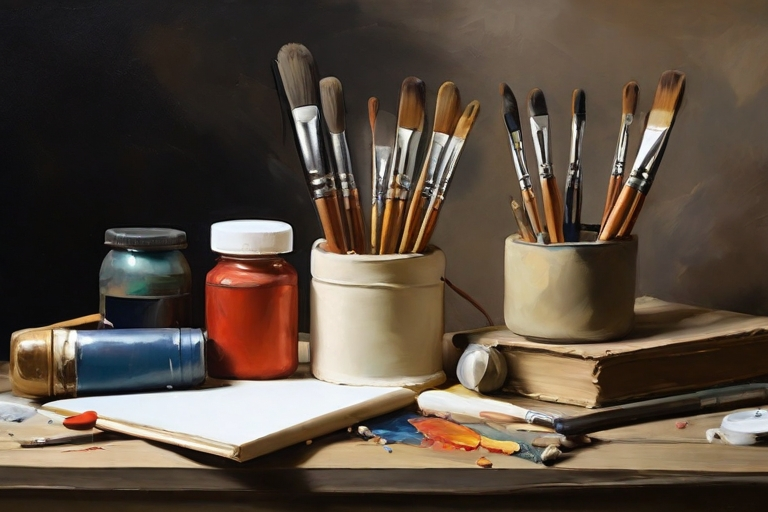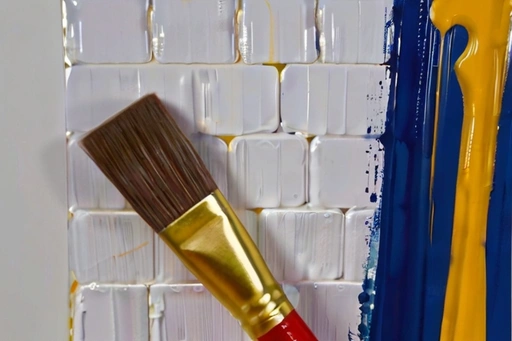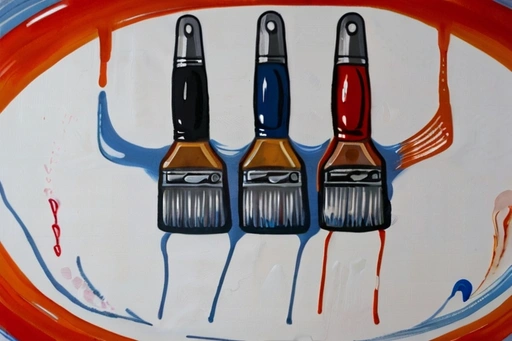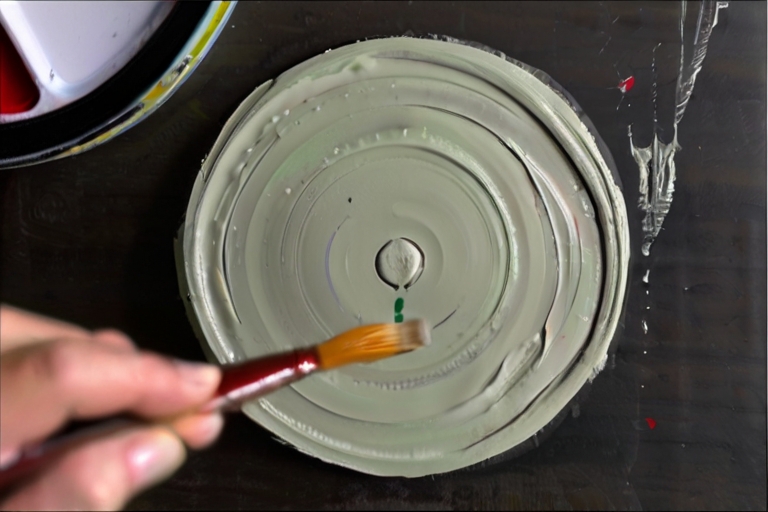
Exploring the Greatness of Arts Education Statistics
Table of Contents
Introduction to Art Education

A. Definition of Art Education
Art education encompasses school and community-based programs that nurture creativity and cultivate skills in diverse artistic disciplines like visual arts, music, dance, theatre, media arts, and more.
B. Importance of Art Education in Academic Curriculum
Beyond artistic skill development, art education fosters vital skills critical for overall academic success. Studies demonstrate how it enhances critical thinking, motivation, cultural awareness, and communication, empowering students to thrive across the curriculum.
C. Role of Art Education in Child Development
The benefits of art education extend beyond academics, nurturing well-rounded individuals. Research shows it stimulates brain development, improves motor skills, strengthens emotional regulation, and fosters social skills, setting children on a path to personal growth and well-being.
Enrollment and Participation in Art Education
A. Total Enrollment Numbers in Art Education Programs
Approximately 8 million U.S. students in grades K-12 (source: Art Education Partnership, 2019) participated in art education programs during the 2016-2017 school year. This participation signifies the growing recognition of art education’s importance.
B. Participation Rates by Age Group
- Early Childhood Education: In 2014, 36% of nursery and kindergarten programs incorporated designated arts specialists (source: U.S. Department of Education). Arts integration models, where arts principles infuse other subjects, are also prevalent in this age group.
- Primary and Secondary Education: Over 50% of grades K-5 students received dedicated art education in 2016-2017 (source: National Center for Education Statistics). However, participation dips to under 40% by grades 9-12, highlighting a concern for declining access in later years.
- Higher Education: Encouragingly, over 1.7 million college students pursued arts degrees in 2017 (source: National Center for Education Statistics), showcasing the vibrant landscape of creative fields.
C. Trends in Art Education Enrollment
While art education participation experienced significant growth in the late 20th century, recent years have seen a plateau. Declining budgets and increased emphasis on standardized testing are potential factors contributing to this stagnation.
Access to Art Education
A. Availability of Art Education Programs in Schools
Despite the benefits, access to art education remains uneven across schools. Only about half offer dedicated theatre and dance programs compared to over 90% offering music and visual arts (Source: U.S. Department of Education). This disparity underscores the need for equitable access across all disciplines.
B. Disparities in Access Based on Socioeconomic Factors
A crucial concern is the significant disparity in access based on socioeconomic factors. Students from lower-income areas attend schools with substantially fewer art education opportunities compared to their higher-resourced counterparts. This inequity perpetuates existing disparities and denies disadvantaged students the transformative power of the arts.
C. Regional Disparities in Access to Art Education
Geography also plays a role. Rural and high-minority schools tend to have fewer arts offerings and qualified arts teachers compared to suburban schools. Addressing these regional disparities is essential for ensuring comprehensive art education reaches all students, regardless of location or background.
Accessability for arts education can be a problem for your children, however here at both LearningMole.com and on the LearningMole YouTube Channel we have a selection of videos and blog posts to facilitate exactly this! Here is a great video that covers art lessons at home for kids, parents and educators!
Benefits of Art Education
A. Academic Achievement and Performance
The benefits of art education extend beyond the stage or canvas. Studies consistently show that students with art education outperform non-art peers on standardized tests and demonstrate higher overall academic success. This improved performance is attributed to enhanced focus, critical thinking skills, and motivation developed through artistic engagement.
B. Social and Emotional Development
Beyond academic gains, art education fosters personal growth and well-being. It nurtures self-confidence, empathy, emotional intelligence, and positive identity development in children, equipping them with essential skills for navigating the complexities of life.
C. Cognitive Skills Enhancement
The arts are not just about self-expression. Engaging in artistic activities strengthens vital cognitive skills. Art education bolsters verbal, visual, auditory, and interpersonal skills, boosting overall learning capacity and preparing students for success in diverse fields.
D. Long-Term Benefits
The impact of art education transcends the classroom. Research indicates that years of art education correlate with higher-paying jobs, college degree attainment, civic engagement, and greater life satisfaction. These long-term benefits highlight the significant return on investment in robust art education programs.

Challenges Facing Arts Education
A. Funding Challenges for Arts Programs
Declining public budgets often disproportionately impact art education, with funding cuts exceeding those in other subject areas. This inadequate financial support undermines program quality and limits access for students who desperately need the transformational power of the arts. Investing in dedicated funding streams and advocating for equitable resource allocation across all subjects is crucial for preserving and strengthening art education programs.
B. Lack of Qualified Arts Educators
Another critical challenge is the shortage of qualified arts educators. Recruiting and retaining skilled teachers across disciplines, particularly in under-resourced schools, remains a persistent issue. Addressing this gap requires comprehensive strategies like competitive salaries, robust professional development opportunities, and loan forgiveness programs for arts educators.
C. Emphasis on Standardized Testing and Core Subjects
A persistent challenge is the policy focus on standardized test performance in math, reading, and other core subjects, often minimizing the importance of art education. This narrow emphasis deprives students of the holistic development fostered by the arts and overlooks the essential role arts play in nurturing well-rounded individuals and future innovators.
Impact of Arts Education on Communities
A. Cultural Enrichment and Diversity
Beyond individual benefits, art education enriches communities in profound ways. It fosters cultural literacy, appreciation for diverse artistic expressions, and the preservation of artistic heritage. This inclusive environment combats prejudice and promotes understanding across cultures, strengthening the fabric of our society.
B. Economic Impact of Art Education Programs
The arts are not just a cultural treasure; they are a powerful economic engine. Arts industries generate substantial revenue and create numerous high-paying jobs. By preparing students with creative skills and innovative thinking, art education fuels the creative economy and contributes to local and national economic prosperity.
C. Community Engagement and Social Cohesion
Art education is more than just learning skills; it’s about building bridges. Participatory arts programs create a platform for people of all ages and backgrounds to come together, fostering social cohesion and reducing isolation. This shared experience of creativity strengthens communities and promotes a sense of shared identity and belonging.
Success Stories and Case Studies
A. Examples of Successful Art Education Programs
Inspiring examples showcase the transformative impact of art education. The Kennedy Center’s Changing Education Through the Arts program demonstrates the effectiveness of arts integration approaches in boosting student engagement and academic achievement.
B. Impact of Art Education on Student Success
Long-term studies like the Catteral research reveal remarkable outcomes. Low-income students deeply engaged in the arts demonstrated significantly higher academic achievements and career success compared to their non-arts peers. These stories of individual growth highlight the undeniable power of arts education to empower students from all backgrounds.
C. Testimonials from Educators, Students, and Parents
The impact of arts education is not just statistics; it’s palpable in the firsthand accounts of educators, students, and parents. Teachers witness struggling learners blossom through artistic expression, students discover their creative voices and build confidence, and parents see their children develop essential life skills and find joy in artistic pursuits. These personal narratives underscore the human dimension of arts education and its potential to touch lives and transform communities.

Advocacy and Policy Initiatives
A. Organizations Advocating for Arts Education
A dedicated network of organizations champions the cause of art education. Major groups like Americans for the Arts, State Education Agency Directors of Art Education, and the Art Education Partnership tirelessly advocate for equitable access to art education for all students.
B. Policy Initiatives Supporting Art Education
Federal laws like the Every Student Succeeds Act (ESSA) designate arts as a core subject and support arts education programs. However, implementation gaps persist at state and local levels, highlighting the need for continued advocacy and policy action.
C. Grassroots Efforts to Promote Arts Education
The fight for vibrant arts education extends beyond established organizations. Coalitions like the ESSA Arts Education Coalition mobilize passionate community members, parents, and educators to advocate for expanded policies and funding commitments. These grassroots efforts are crucial for sustaining momentum and amplifying the call for equitable arts education opportunities.
Future Outlook and Recommendations
A. Strategies to Improve Access to Arts Education
Increasing dedicated funding, recruiting and retaining more qualified arts educators, strengthening arts curricula, and integrating cross-disciplinary arts approaches are vital steps towards ensuring wider access to high-quality arts education for all students.
B. Importance of Integrating Arts Across the Curriculum
Arts education is not an isolated subject; it has the power to enhance engagement and skills in other core subjects. Infusing arts throughout the curriculum, through models like arts integration, can break down silos and unlock the full potential of every student.
C. Call to Action for Stakeholders in Arts Education
Ensuring a vibrant future for arts education requires a collective effort. Policymakers, administrators, educators, parents, students, and community partners must come together to advocate for funding, implement supportive policies, and create dynamic learning environments where creativity can flourish.

Conclusion
A. Summary of Key Findings
While participation in arts education is steadily rising, vast inequities persist. Uneven access due to funding disparities, resource limitations, and policy priorities like standardized testing disproportionately impact students from lower-income backgrounds and rural communities. Yet, amidst these challenges, the data reveals a story of immense potential. Studies consistently demonstrate the myriad benefits of arts education, from academic achievement and cognitive development to improved social-emotional skills and long-term career success. The arts nurture creativity, innovation, and cultural understanding, enriching individuals and empowering communities.
B. Importance of Investing in Arts Education
Investing in robust arts education is not just a fiscal or moral imperative; it is a strategic one. Equipping future generations with creative thinking skills, cultural awareness, and the ability to collaborate and communicate effectively is crucial for navigating the complexities of the 21st century. A vibrant arts-education landscape fuels economic growth, strengthens communities, and fosters a future where individuals can reach their full potential and contribute meaningfully to society.
C. Hope for a Brighter Future
Investing in equitable access to quality arts education for all students is not merely a dream; it is a tangible goal within reach. Through collaborative efforts among policymakers, educators, parents, advocates, and community members, we can advocate for robust funding, strengthen policies, and cultivate innovative learning environments where creativity thrives. By prioritizing the arts, we pave the way for a brighter future, where every child has the opportunity to discover their artistic voice and contribute to a more vibrant, inclusive, and creative world.
If you have enjoyed this blog post be sure to check out some of our other insightful articles at LearningMole! If you are further interested in Educational content be sure to check out our post about Educational statistics!


Leave a Reply